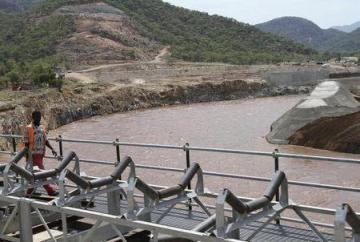Ethiopian dam experts hold meetings in Addis Ababa
January 6, 2016 (ADDIS ABABA) – Experts from the tripartite committee on the Great Ethiopian Renaissance Dam (GERD) have convened meetings in Addis Ababa to discuss the legal, financial and administrative issues pertaining to the technical studies of the dam.

The same source added the tripartite committee experts would also discuss the time-frame for conducting the dam impact studies without specifying when the Addis Ababa meeting would end.
It is noteworthy that U.K.-based law firm Corbett & Co was selected last year to manage the legal affairs of the tripartite committee.
Following the eleventh meeting of the tripartite committee on the dam last month in Khartoum, the ministers of irrigation and foreign affairs of Sudan, Egypt and Ethiopia signed a document including several agreements pertaining to the GERD.
The three parties agreed that the French Artelia and BRL groups would undertake the dam impact studies.
The multi-billion dollar dam is being constructed on the Blue Nile, about 20 kilometres from the Sudanese border, and has a capacity of 74 billion cubic meters, and is expected to generate electrical power of up to 6,000 megawatts.
Egypt is concerned that the dam could reduce its quota of 55.5 billion cubic meters of the Nile water, while the Ethiopian side maintains that the dam is primarily built to produce electricity and will not harm Sudan and Egypt.
(ST)
